- Charles Cofer
- Clay Yarborough
- Dan Scanlan
- Danny Perez
- Gary Koniz
- Jacksonville
- Jacksonville Bold
- JaxPort
- Jay McGovern
- Joe Biden
- john rutherford
- Kamala Harris
- Kat Cammack
- Kevin Carrico
- Lenny Curry
- Mara Macie
- Melissa Nelson
- Nick Primrose
- Prime Osborn Center
- Reggie Gaffney Sr.
- Ron DeSantis
- Sam Garrison
- Sam Mousa
- Susie Wiles
- T.K. Waters
- Talleyrand Marine Terminal
- Trent Baalke
- Wyman Duggan

If the presentation of the proposed stadium deal is any indication, Mayor Donna Deegan has tied herself to the Jacksonville Jaguars.
Is the Stadium of the Future a good deal?
In terms of what other cities are dealing with, it arguably is.
The $1.25 billion deal will be a 50/50 split, with the Jaguars agreeing to cover all cost overruns in a “much larger commitment than they originally proposed,” per Deegan. Jacksonville will also be on the hook for $150 million in deferred maintenance costs.
Even with deferred maintenance costs included, the city share would be less than the $760 million Nashville is spending on its $2.1 billion domed stadium, with the state of Tennessee adding $500 million — an option the state of Florida will not offer.
The Jaguars’ ask is much less than that of the Cleveland Browns — $1.2 billion in city and state money — from their town and state.
Community benefits are also part of the pitch, with construction workforce development programs, local vendors prioritized and the Jacksonville Small and Emerging Business Program’s goals accepted. There is also $300 million in shared costs for the Outeast neighborhood abutting the stadium, workforce development and parks.

The Jaguars will also commit $100 million to develop a commercial district next to the stadium, which is expected to be built by 2032.
The presentation to the City Council finally brought forward public messaging on a process that hasn’t involved anyone but the team and the executive branch thus far.
However, legislative approval will be needed to move forward.
Meanwhile, why the Mayor’s Office refused to release the numbers before the presentation remains a mystery, especially given that the proposal is more modest than the preliminary term sheet the team gave the previous administration.
The scheme’s financing relies on deferring a pension tax expected to take effect in the next couple of years, per the Mayor’s Office, moving legacy projects back to that and using a big chunk of the following four capital improvement plans to fund the stadium.
The rationale?
“A prior administration thought it would be a good idea to consider ending the BJP earlier than 2030, possibly at the end of 2026. This required taking projects that would have been paid for by the BJP sales tax, placing those projects in the City’s Capital Improvement Plan (CIP), and borrowing money to complete those projects … If the city follows through with the approved referendum BJP end date of 2030 and returns the projects that were taken out of the BJP and adds similar projects that can be added through City Council approval, it will remove around $600 million from anticipated borrowing and save the taxpayer over $1.5 billion in debt payments and still get all the projects completed according to their schedules.”
If this deal goes through as expected, it will present exciting challenges for City Council members who identify as fiscal conservatives.
After all, it’s hard to get too worked up over picayune budget items when you’ve greenlighted the most significant spend in local history.
The deal presents similar challenges for whatever Deegan’s other agenda might have been regarding resiliency and projects in the rest of the city.
The financing scheme also seems like a snub to the state legislators who passed the referendum mechanism allowing Jacksonville’s pension changes last decade, under the impression that the city would use the extraordinary flexibility created by re-amortization and the repurposed half-cent sales tax to tackle the pension. The timing is notable, given that just last Session, the big push was to kill a bill that would have required new referendums to protect that revenue stream starting in 2026.
Mike Weinstein, who negotiated the deal and crafted the pension re-amortization plan approved by roughly ⅔ of voters eight years ago, is adamant that the city can afford to push back the pension tax to finance the stadium.
“Our recommended funding proposal follows the will of voters when they passed the referendum to complete Better Jacksonville Plan projects (when John Delaney was Mayor) and start paying down pension fund debt in 2031 out of the halfpenny sales tax. Anyone who says this funding proposal would doom the pension fund is either intentionally misleading the public or misunderstands how the pension fund actually works. Leaving the Better Jacksonville Plan on its originally intended timetable will save taxpayers $1.5 billion in debt service and fully fund the pensions.”
Mayor Deegan, of course, is currently involved in contentious labor negotiations with police and fire unions. Their asks for big raises to give them salary parity with other jurisdictions will be backed up by this creative financing. After all, if Jacksonville can afford to commit the next few years to a stadium build, why can’t the city afford to pay firefighters, cops, and jail guards what they’re worth?
If you want to hear more about the potential pitfalls of the deal — and why wouldn’t you be — please check out this Twitter Space Thursday moderated by Chris Hand and featuring Nate Monroe and A.G. Gancarski.
At today’s @CityofJax Council meeting, @MayorDeegan & @Jaguars will reveal plans to renovate @EverBankStadium. What does the deal mean for taxpayers, fans, and others? @AGGancarski, @NateMonroeTU & I will discuss on Thursday, 5/16 at 8 PM. #jaxpol #DUUUVAL https://t.co/J16R1w7v5N
— Chris Hand (@chrishandjax) May 14, 2024
Trial postponed
A federal trial challenging how the Gov. Ron DeSantis administration removed people from Medicaid has been postponed.
U.S. District Judge Timothy Corrigan, over the weekend, posted a note in federal court files stating that U.S. District Judge Marcia Morales Howard had a death in her family. He said that, as a result, the trial could not move forward as scheduled and that a status conference would be held to reset the date.
The lawsuit filed in Jacksonville was brought by several people who have been part of the Medicaid program against top officials who help oversee the program. The lawsuit centers on whether or not the administration properly notified individuals about their termination from the safety net health care program.

During COVID-19, the federal government increased funding to states for Medicaid but mandated that the states could remove people while the emergency was in place. Congress authorized states to resume checking enrollees’ eligibility in Spring 2023. Since then, Florida has seen its Medicaid rolls go from 5.77 million people to 4.67 million as of March of this year.
The lawsuit was first filed last August, and those who sued want Howard — appointed by President George W. Bush — to find that Florida’s notices violated federal law and due process rights. The lawsuit also seeks to prevent Florida from using its current notice process and reinstate those previously removed to Medicaid until a new, more detailed process is implemented.
Lawyers for the Department of Children and Families and Agency for Health Care Administration maintain that the state’s handling of Medicaid enrollees was done in a “permissible” and “reasonable means of communicating.”
Can you DIG it?
Speaking of Florida’s Governor, he’s slotting more than $2 million to Jacksonville via the Defense Infrastructure Grant Program.
Specifically, $2,080,100 will continue the Compatible Land Use/Encroachment Protection Program for properties in the Military Influence Zone of Naval Station Mayport, Naval Air Station Jacksonville and Outlying Landing Field Whitehouse.
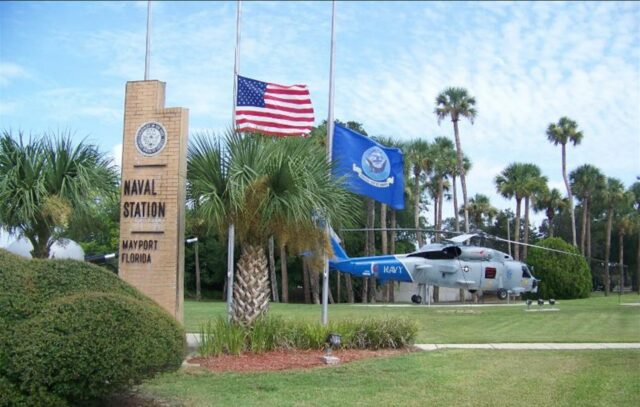
“Florida is the most military- and veteran-friendly state in the nation, and we are continually working to ensure that our military communities remain strong,” DeSantis said.
Over $23.4 million has been granted to cities throughout the state during DeSantis’ tenure under this program.
Garrison competition
Clay County is poised to have a House Speaker soon, but a Democrat from Middleburg hopes to stop that.
Rep. Sam Garrison, who will be Speaker in 2026 if Republicans retain their majority, looks likely to face a challenge in House District 11 from Democrat Charles Peter Browne.
Browne, whose Google Voice number linked to his campaign account promotes his affiliation with the Boys and Girls Club at Wilkerson Jr. High, did not immediately respond to Florida Politics’ request for comment.
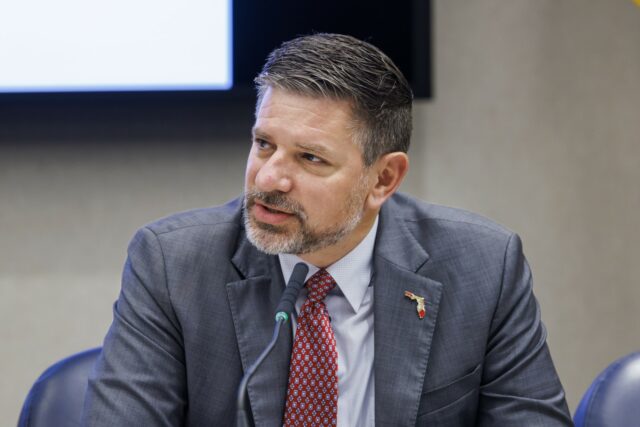
But what’s clear is the political newcomer’s work is cut out for him, running against a legislative leader in a staunchly Republican district.
As of the most recent quarterly fundraising reporting, encompassing the period through the end of March, Garrison had roughly $93,000 in his campaign account.
His political committee, Honest Leadership, has nearly $700,000 on hand. The committee raised more than $1.825 million in the last six months of reports, with funds distributed to other campaigns and committees along the way.
The district is 54% Republican and in the latest book-closing report from the Division of Elections, no-party voters and third-party registrants combined to outnumber Democrats.
The last time Garrison won, he got nearly 74% of the vote against an underfunded Democrat.
The question this year: can he eclipse that rousing mandate in November’s General Election, assuming his opponent qualifies for the ballot next month?
Black’s battle
The man who leads the Republican Party of Duval County will have more to do in November than fret about other people’s elections, with a Democrat rising to challenge Rep. Dean Black in heavily Republican HD 15.
Gary McManus, who lives on Jacksonville’s Westside, opened an account this week to challenge the man who got 99% support against a write-in two years ago, according to records kept by the Florida Division of Elections.
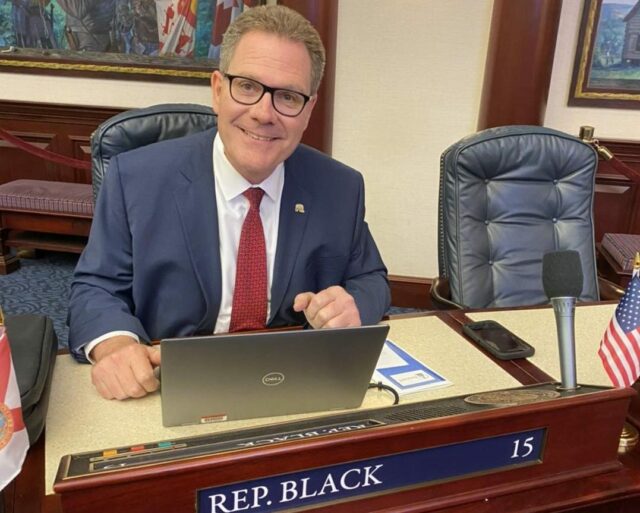
McManus had eyed a run in Florida’s 4th Congressional District against Rep. Aaron Bean, which would have created a contested Primary against LaShonda “L.J.” Holloway. After consideration and pleas from fellow Democrats, the longtime computer sales executive opted for the state House race instead.
McManus isn’t familiar with Black. He says that he’s “brushing up on him.” However, he also believes that as someone who was a registered Republican until Donald Trump‘s nomination in 2016, he can “bridge the gap” between disenchanted Republicans and his Democratic candidacy.
But he knows it’s an “uphill battle,” a read supported by registration numbers.
The district, which encompasses part of Duval and all of Nassau, is 49.4% Republican and 27.1% Democratic.
Brady bunch
A North Florida Republican legislator looks likely to face an opponent in November.
This month, Robert “Bobby” J. Brady Jr. filed to oppose Rep. Chuck Brannan in House District 10, which includes Baker, Bradford, Columbia, Union and some of Alachua counties.
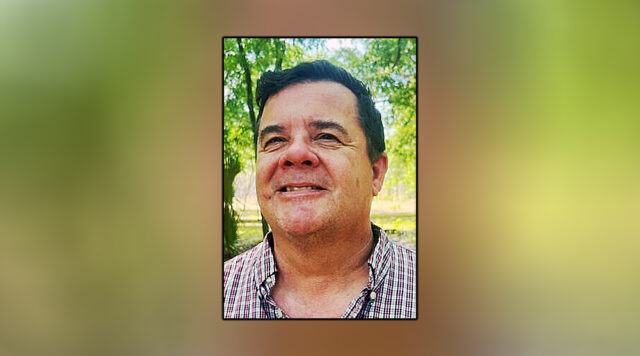
While the district is 55% Republican, suggesting it’s unlikely to be flipped, “conservative Democrat” Brady is betting that despite having moved to the area in the last year from Tampa, he can make some headway in a “predominantly Republican” district against Brannan, whom he depicts as a puppet of Gov. DeSantis.
“I know this guy has a 40-point lead over me, and he has money and everything in the world, and he is a rubber stamp for whatever the Governor wants him to do, you know. No real backbone. Never, never any ‘Well, gee, let me put the people first’ or at least that I’ve seen,” said Brady, a native of Connecticut who moved to the district last Summer.
“He could be a good man. I do not know him. I look forward to meeting him and seeing what he actually does … You know, so far, his voting record is whatever they tell him to vote for,” Brady said.
The Democrat went on to suggest his opponent would ship family out of state to terminate pregnancies.
He then suggested that Brannan could facilitate an abortion for a family member despite the law.
“It doesn’t affect someone like the man I’m running against. His family has money. His wife or his daughter could hop on a plane, take two weeks off and fly across the country,” Brady said. “Not everybody has that option.”
Brady has one issue to reconcile between now and November: securing a homestead in the district.
“I will be looking for another piece of land currently to, you know, to plant and stuff. So, I’m sure I will be there before the election,” he said.
However, he’s unsure if he will change his homestead exemption to reflect that move.
The blue backs Primrose
Republican House District 18 candidate Nick Primrose has now earned endorsements from the state’s major police unions.
“As we approach the 2024 elections, we are aware that strong leaders are needed to lead Florida to a prosperous and safe future,” Florida Fraternal Order of Police President Steve Zona said.
“We need leaders that are dedicated to serving their constituents and protecting the citizens in their community. Nick Primrose is the choice of the men and women in FOP District Two.”
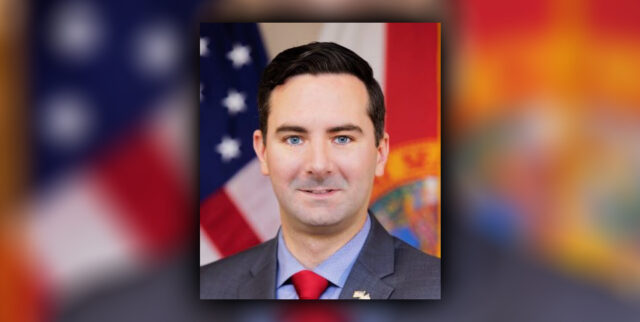
The FOP endorsement comes shortly after Primrose snagged the nod from the state’s other major police union, the Florida Police Benevolent Association.
In late April, Florida PBA President John Kazanjian said Primrose’s “dedication to ensuring the well-being and security of our communities is commendable, and we are confident that he will be a strong advocate for law enforcement in the Florida House of Representatives.”
Primrose is a former attorney for Govs. Rick Scott and Ron DeSantis, lending plenty of credibility to hit GOP bona fides as he contends for the seat.
HD 18, which covers part of St. Johns County, is an open seat this year as incumbent Republican Rep. Cyndi Stevenson is term-limited.
With the candidate qualifying period over, Primrose’s only opponent is fellow Republican Kim Kendall. Since no Democrats or third-party candidates qualified for the ballot, all district voters can cast a ballot in the Aug. 20 Primary Election for HD 18.
Primrose is heavily outraising Kendall. He had raised about $225,000 for his campaign through the end of March compared to around $106,000 for Kendall, whose total includes a $50,000 candidate loan. Primrose has an additional $85,000 at his disposal via his affiliated political committee, Friends of Nick Primrose.
Pablo honey
The state of Florida is considering a boating restriction in St. Johns County.
The Florida Fish and Wildlife Commission is mulling what it calls a “complete application from St. Johns County requesting approval of Ordinance No. _2024-20_ which seeks to establish a Slow Speed Minimum Wake boating-restricted area within Pablo Creek.”
The rationale, via an ordinance from SJC: “Pablo Creek, approximately 1,100 feet northeast of San Pablo Road Bridge and 1,000 feet from the main channel of the ICW, is a double-blind curve which obscures the visibility of vessels and other users of the waterway.”
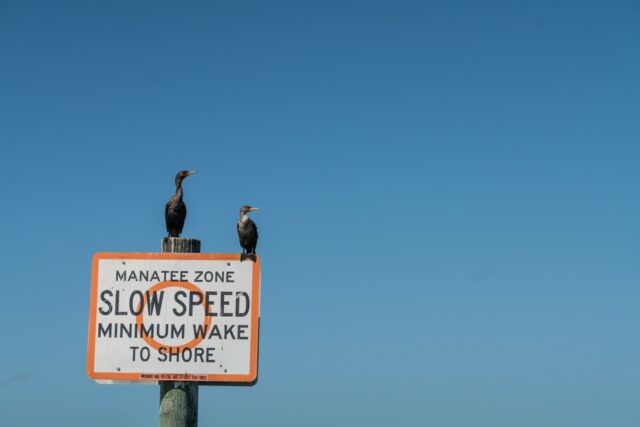
Furthermore, “the gap between the existing and proposed boating-restricted areas, without being regulated, would pose a safety risk to the public from rapid acceleration and deceleration for a short distance, and that the gap between the two boating-restricted areas on Pablo Creek should be regulated to protect public safety.”
Want to weigh in?
The FWC says the “public may provide written comments, recommendations, requests, inquiries or other correspondence to the Boating and Waterways Section at 620 South Meridian Street, Tallahassee, FL 32399-1600, or by email at [email protected].”
Bond bump
The markets have more confidence in the future of public transportation in Jacksonville.
Fitch Ratings upgraded the Jacksonville Transportation Authority’s (JTA) Issuer Default Rating (IDR) from ‘AA’ to ‘AA+,’ with ‘Stable’ Outlook, the independent agency is announcing.
Moreover, Fitch affirmed the ‘AA-’ rating on the JTA’s outstanding senior lien Local Option Gas Tax (LOGT) series 2015 and 2020 bonds.
All of this is great news, per JTA leadership.
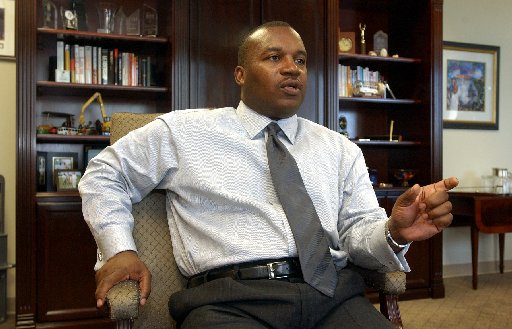
“This rating increase comes as a direct result of the JTA’s sound financial strategy and our dedication to upholding our responsibility as good stewards of taxpayer funds,” said JTA CEO Nat Ford. “JTA’s strategic financial plan is the cornerstone of our past, present, and future successes in providing holistic mobility services for the Northeast Florida communities JTA serves.”
“The Independent Default Rating upgrade to ‘AA+’ with a Stable outlook reflects JTA’s financial resilience, strength, and the prudent management of its long-term liabilities,” said JTA Senior Vice President/Chief Financial Officer Raj Srinath. “This further increases our competitiveness for public and private funding and cost-effective financing opportunities for advancing our capital programs.”
Blue means green
One of Northeast Florida’s most recognizable corporate stakeholders is spending a lot on public broadcasting.
Florida Blue is donating $1 million to WJCT to support local news reporting and early childhood engagement.
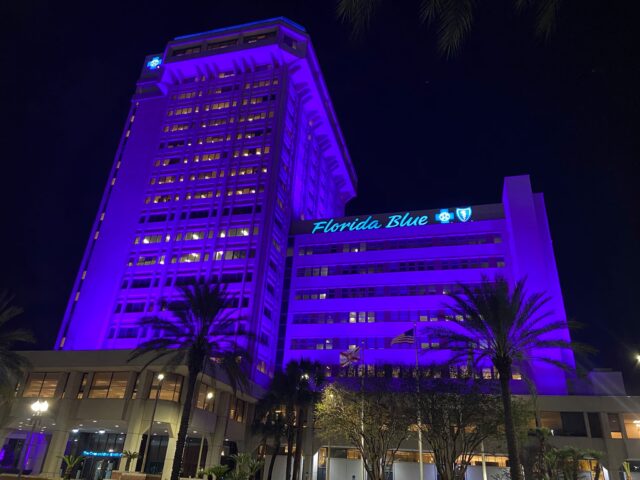
“WJCT Public Media is a vital community partner, helping to inform about critical issues, educate our children and activate Northeast Florida’s culture through community efforts,” said Pat Geraghty, President and CEO of Florida Blue. “Florida Blue is proud to partner with community organizations like WJCT Public Media to ensure our children receive critical educational components to achieve success in school and in life.”
“We’re grateful to Florida Blue for providing this support, which will allow us to continue the work of expanding the services we offer our region in local journalism and early childhood education,” said David McGowan, President and CEO of WJCT Public Media. “We have a unique and vital role to play in addressing our community’s needs in these areas, and we appreciate the recognition and resources which this gift provides.”
(Obligatory disclosure: A.G. Gancarski is a columnist for Jacksonville Today, an initiative that will benefit from this grant).
Remote control
Your neighbors may not be commuting, even if you are.
Jacksonville is among the top 10 U.S. cities increasingly adapting to remote work. A “Promoleaf” analysis showed Jacksonville had the ninth-biggest increase in remote workers compared to 2023.

Jacksonville saw a 40% increase in year-over-year remote working in that city, a sign that cheap-ish homes and ocean access are draws for people not tethered to corporate office space in other places.
It’s the only Florida city to make the top 10 of increased remote workers in metro areas.
And it’s arguably bucking an in-state trend.
Compared to other states, Florida’s workforce has yet to embrace remote working fully. About 17% of Florida workers conduct business either full-time or part-time from their homes, compared to 23% nationally. — Drew Dixon.
Manufacture muddle
According to the latest Economic Monitoring Survey conducted by the University of North Florida (UNF), Economic indicators show a mixed bag of trends for the Northeast Florida business manufacturing sector in April.
On the upbeat side of the economic picture in the Jacksonville area, manufacturing business output remained above the essential 50-point mark in April, a general positive indicator of productivity.
“Jacksonville’s Output Index stands at 54 in April, indicating expansion in production for the local manufacturing sector. This figure suggests that more manufacturers are scaling up their operations than scaling down compared to the previous month,” the survey concluded.
The Jacksonville area survey tabulates several factors to establish the scale of manufacturing business trends in the area, such as business output, employment, orders, inventory, purchases, and prices. Albert Loh, associate dean of the Coggin College of Business at UNF, oversaw the survey.

The March survey showed fairly consistent upticks in the 12 areas surveyed, while only two of those indicators decreased. A few more indicators dropped in April, such as new orders, new export orders, backlogs of work, finished goods, and employment, all of which saw a nominal decrease in April compared to March in the Jacksonville area. There were only two indicators that decreased in March. — Drew Dixon.
The cruelest month.
According to the most recent figures released by the Northeast Florida Realtors Association (NEFAR), April was brutal for closed and pending home sales in most of the First Coast region’s six counties.
The largest and fastest-growing counties along the First Coast saw sharp declines in the number of homes sold in April compared to March. The six-county region witnessed a combined 5.8% decrease in closed sales, falling to 1,843 for the month. Pending sales dropped even more, with a decline of 26.7% to 1,465, according to the NEFAR report for April.
The median price for a First Coast home increased in April compared to March. It reached $399,990, a 2.7% increase over the previous month.

Nassau County saw a 16.4% drop in closed sales compared to the previous month, coming in at 122 in April. Pending sales saw even more severe declines, falling by 24.3% to 112, the most significant decrease in those combined factors for the month compared to any other county in Northeast Florida.
The median price for a Nassau County home did jump, increasing by 11.5% to $484,995 for the month.
Even St. Johns County struggles with home sales. Closed sales fell by 4.9% to 485, while pending sales dropped by 20.9% to 409. However, the median price in St. Johns County reached new heights, with an 11.4% month-over-month increase to $600,000.
Clay County’s home sales were also walloped with a 16.2% decline in closed deals, falling to 217, and a 20.6% drop in pending sales, decreasing to 196. The median price for a single-family home in Clay saw a nominal increase of 1.1% compared to March, up to $352,000.
Duval County was not free of market challenges, either. Closed sales dropped 2.6% to 964. Pending sales were hit hard in Duval, falling 31.6% from March to 704. Duval County’s median price for a single-family dwelling saw a slight drop, falling from $346,000 in March to $345,500 in April.
Putnam and Baker counties each saw modest increases in closed sales, while they also saw decreases in pending sales. — Drew Dixon
Defensive questions
The Jaguars are scheduled to hold the first of their offseason practices with the first of their Organized Team Activities (OTAs) on Monday. It will be the first time the veterans and rookies will be on the field together this offseason.
One of the most intriguing questions for this season is how different the Jaguars’ defense will look under the new defensive coordinator, Ryan Nielsen.
In short, the answer is “very.”
“It’s a different scheme. You’re switching gears a little bit from that 3-4 mode to kind of four-down mode and even though you spend so much time in four-down defense a lot anyway and I think some of the techniques are going to be a little different,” said Jaguars’ head coach Doug Pederson. “Obviously, there’s learning with the verbiage and terminology. The corners are going to be in more press alignment, but not necessarily press technique or press coverage, but press alignment. Still, play, man; mix it up so it’s all different. So, every position is going to have to learn and grow with the system.”
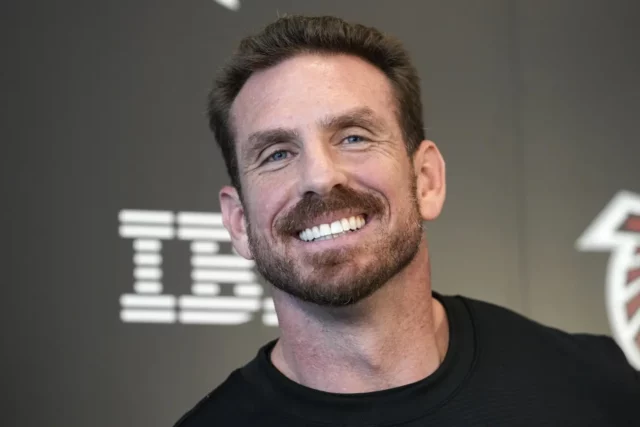
The edge rushers are among the responsibilities most likely to change from last year’s scheme. In Mike Caldwell’s base 3-4, Josh Allen and Travon Walker lined up outside the three down linemen. In a 4-3, they’ll be used as defensive ends. However, Bill Shuey, the linebackers coach, will continue to work with the edge players.
“The way it’s structured is (defensive line coach Jeremy Garrett) has the inside guys, the nose and the tackles and Bill still works the edge,” Pederson said. “But when you’re in your base defense, there’s some transition there to those (strong side linebackers), which are also your kind of outside edge rushers, so there’s a little carryover there.”
As for the pass rush depth, the Jaguars have added some players this offseason and expect growth from last year’s fifth-round pick, Yasir Abdullah.
“I think we’ve got some guys that are in the hunt, (which) are in the mix to make us better,” said Jaguars’ assistant general manager Ethan Waugh. “We added Trevis Gipson, we had some guys there. We have some guys that were on the practice squad previously, DJ Coleman types. Yasir Abdullah is playing the Sam spot, which is really kind of an edge rusher, too, at times. What we want to do is see those guys fight it out and develop because I think you do really need to come up with four edge rushers if you want to play at a Super Bowl level, and finding guys that can affect the quarterback in waves is really key to what we’re trying to do.”
Suppose Allen and Walker can build on their combined 27.5 sacks from a season ago, and players like free agent signees Arik Armstead and Gipson and returning players Roy Robertson-Harris and Abdullah can contribute to the pass rush. In that case, the Jaguars stand the chance of showing improvement on defense.
To do that, the team must be better against the run and create more obvious pass-rushing situations on second and third down.
That’s where Armstead’s addition and the return of a healthy DaVon Hamilton should help.


2 comments
Julia
May 15, 2024 at 5:47 pm
US Dollar 2,000 in a Single Online Day Due to its position, the United States offers a plethora of opportunities for those seeking employment. With so many options accessible, it might be difficult to know where to start. You may choose the ideal online housekeeping strategy with the vs-80 help of this post.
Begin here>>>>>>>>>>>>>> richnessbuilder14.blogspot.com
Marcia Middleton
May 15, 2024 at 6:11 pm
I enjoy reading this, and have a couple of suggestions for clarity and enjoyment. Bolder separators for different subjects. Bylines for the writers. I look for who is writing, and I do not readily see that here. Thank you!
Comments are closed.